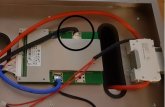Delmar
Solar Addict
Still scratching my head why he measured 9V at the inverter but 53V at the battery. Had the breaker tripped the battery display would be off. Breakers are slow to react to inrush current unlike a fuse.
The BMS is solid state so will have minor leakage voltage when “off” due to inrush. Again one would assume the voltage measured at both the inverter and battery display would match, unless of course there is a voltage drop in the cable which has now been excluded.
If the battery current is insufficient, again the voltage readings should match. Its gotta be a clue…
The BMS is solid state so will have minor leakage voltage when “off” due to inrush. Again one would assume the voltage measured at both the inverter and battery display would match, unless of course there is a voltage drop in the cable which has now been excluded.
If the battery current is insufficient, again the voltage readings should match. Its gotta be a clue…
Last edited:




